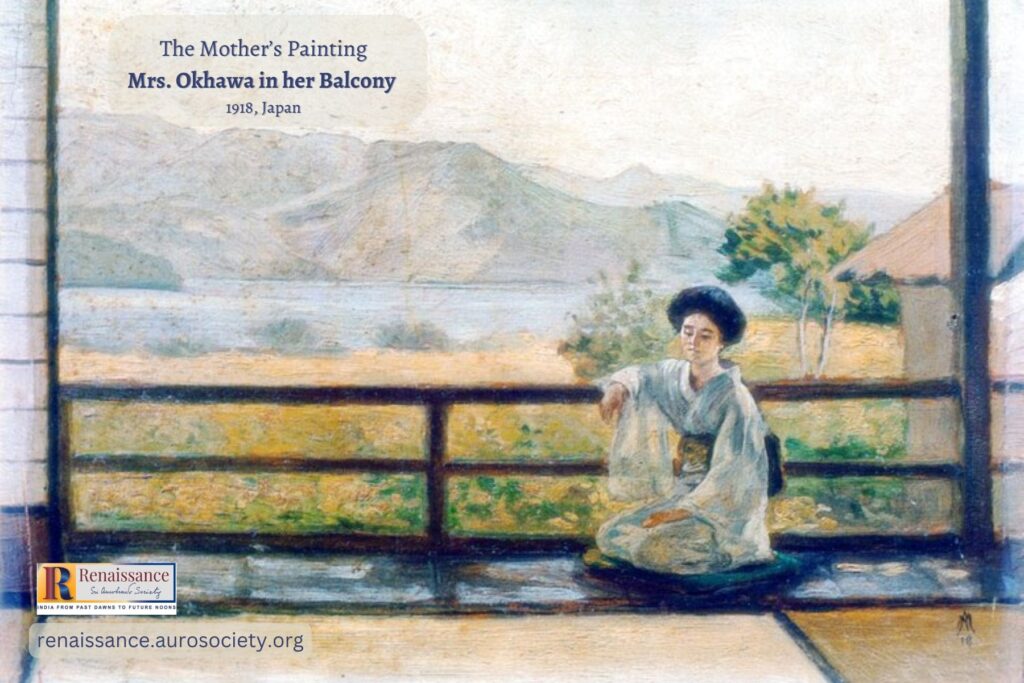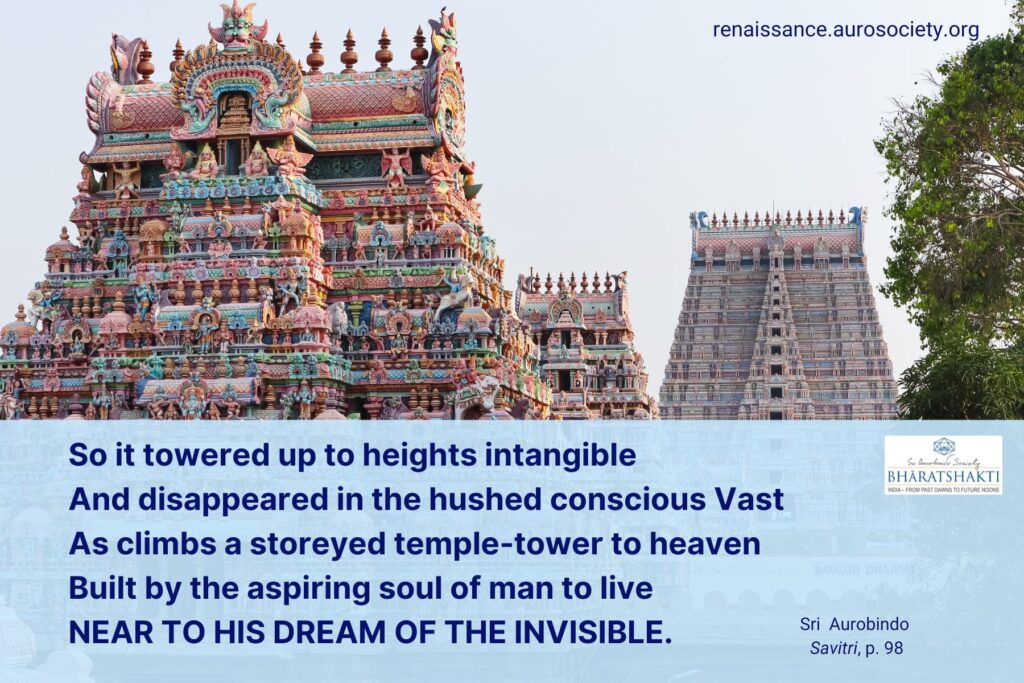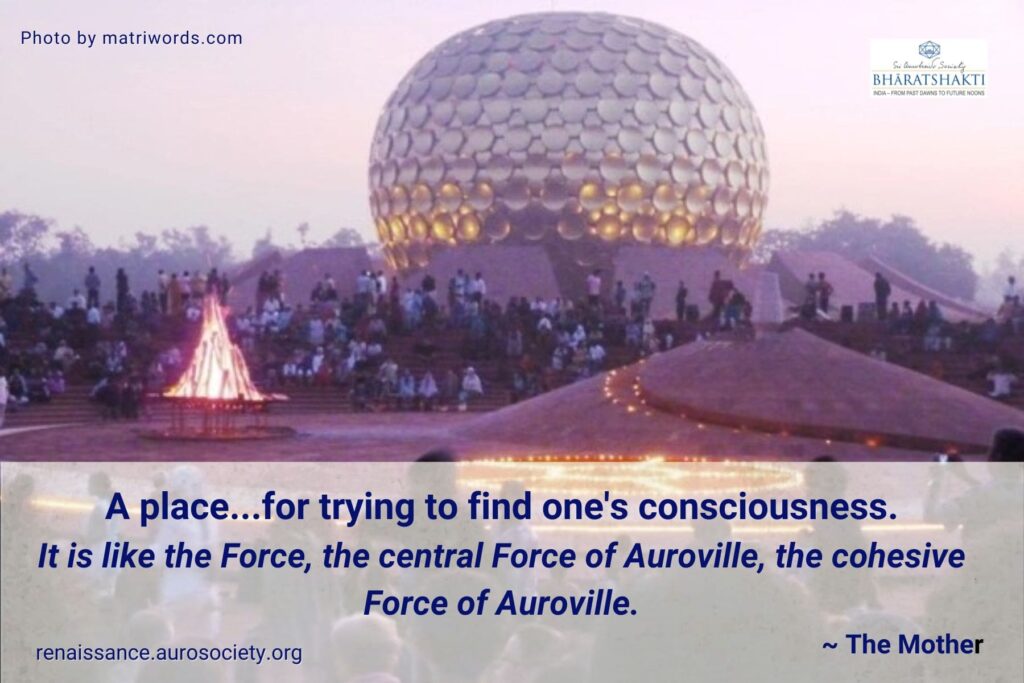Editor’s note: The following three conversations of the Mother speak of the hint of Supermind in the Veda and the significance of the yogic work of Sri Aurobindo with regard to the descent of the Supermind.

Conversation dated November 5, 1961
Disciple: About the discovery of the Supermind in the Veda and by Sri Aurobindo. There is something I don’t quite grasp.
The Mother: Because in the Veda it’s incomplete.
No, they had a hint, like a vision of the ‘thing,’ but there is no proof that they realized it. What’s more, had they realized it, it seems to me that we would certainly have found some traces—but no traces remain.
Theon knew something about it, and he called it ‘the new world’ or ‘the new creation on earth and the glorified body’ (I don’t remember his exact terminology); but he knew of the Supermind’s existence—it had been revealed to him and he announced its coming. He said it would be reached THROUGH the discovery of the God within. . .
Well, on my side, I have made investigations and had innumerable visions concerning the earth’s history, and I spoke about it a good deal with Sri Aurobindo. . .
(silence)
According to what Sri Aurobindo saw and what I saw as well, the Rishis had the contact, the experience—how to put it?… A kind of lived knowledge of the thing, coming like a promise, saying, ‘THAT is what will be.’ But it’s not permanent.
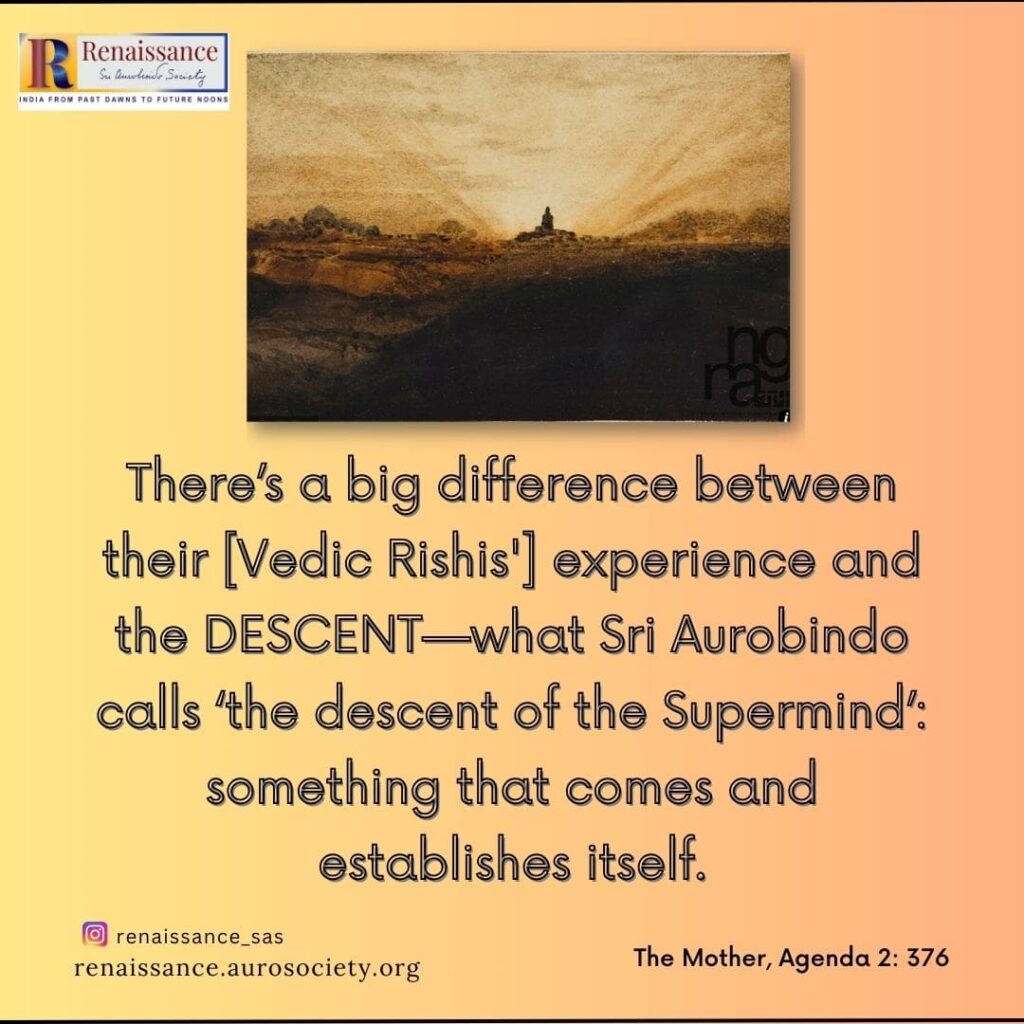
There’s a big difference between their experience and the DESCENT—what Sri Aurobindo calls ‘the descent of the Supermind’: something that comes and establishes itself.
Even when I had that experience [the ‘first supramental manifestation’ of February 29, 1956], when the Lord said, ‘The time has come,’ well, it was not a complete descent; it was the descent of the Consciousness, the Light, and a part, an aspect of the Power. It was immediately absorbed and swallowed up by the world of Inconscience, and from that moment on it began to work in the atmosphere. But it was not THE thing that comes and gets permanently established; when that happens, we won’t need to speak of it—it will be obvious!
Although the experience of ‘56 was one more forward step, it’s not…. It’s not final.
And what the Rishis had was a sort of promise—an INDIVIDUAL experience.
* * *
Conversation dated November 6, 1961
Disciple: Sweet Mother, When I read the Veda I thought I understood that the Rishis, finding the passage blocked above (since they would fall into ecstasy and lose their hold over the body), set out to find the Supermind by the downward path.
But reading Sri Aurobindo, I seemed to understand the opposite: that FIRST he rose up, and then made the Light redescend to open the passage, and that the pressure of the Light from above is what opens the doors below, in Matter. I would like to understand the process.
***
The Mother: It is by rising to the summit of consciousness through a progressive ascent that one unites with the Supermind. But as soon as the union is achieved, one knows and one sees that the Supermind exists in the heart of the Inconscient as well.
When one is in that state, there is neither high nor low.
But GENERALLY it is by REDESCENDING through the levels of the being with a supramentalized consciousness that one can accomplish the permanent transformation of physical nature.
There is no proof that the Rishis used another method, although, to effect this transformation (if they ever did), they must necessarily have fought their way through the powers of inconscience and obscurity.
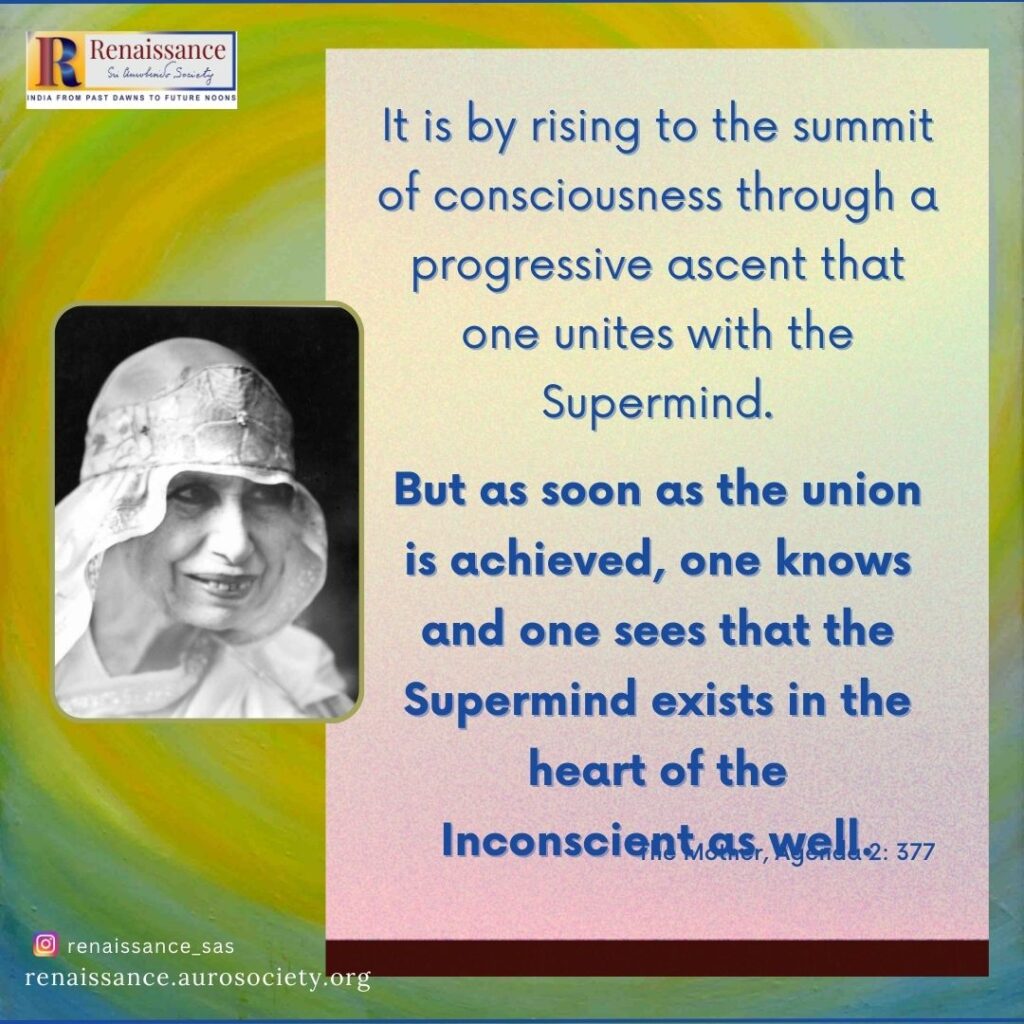
* * *
Conversation dated November 7, 1961
Yes, the Rishis give an absolutely living description of what you experience—and experience continually—as soon as you descend into the Subconscient: all these battles with the beings who conceal the Light and so on. I experienced these things continually at Tlemcen and again with Sri Aurobindo when we were doing the Work—it’s raging quite merrily even now!
As soon as you go down there, that’s what happens—you have to fight against all that is unwilling to change, all that dominates the world and does not want to change.
[. . .]
(silence)
After reading your letter, I had a very strong feeling that you put the problem like that because you were considering it from a mental plane, which is the only plane where it exists; if you go beyond, there are no more oppositions or problems. These things are subtle, you know, and as soon as you try to formulate them, they elude you—formulation deforms.
Disciple: What I mean is that it’s not necessarily in trance, in another world, that one gets the supramental consciousness….
The Mother: No.
Disciple: It’s something the Rishis realized with eyes wide open, in day to-day life, if I understand rightly.
The Mother: I don’t know how they did it….
But I myself have never had it in trance, and neither did Sri Aurobindo—neither of us ever had trances! I mean the kind of trance where contact with the body is lost. That’s what he always said, and one of the first things I told him when we met was, ‘Well, everybody talks about trance and samadhi and all those things, but I have never had them! I have never lost consciousness.’ ‘Ah,’ he replied, ‘it’s exactly the same for me!’
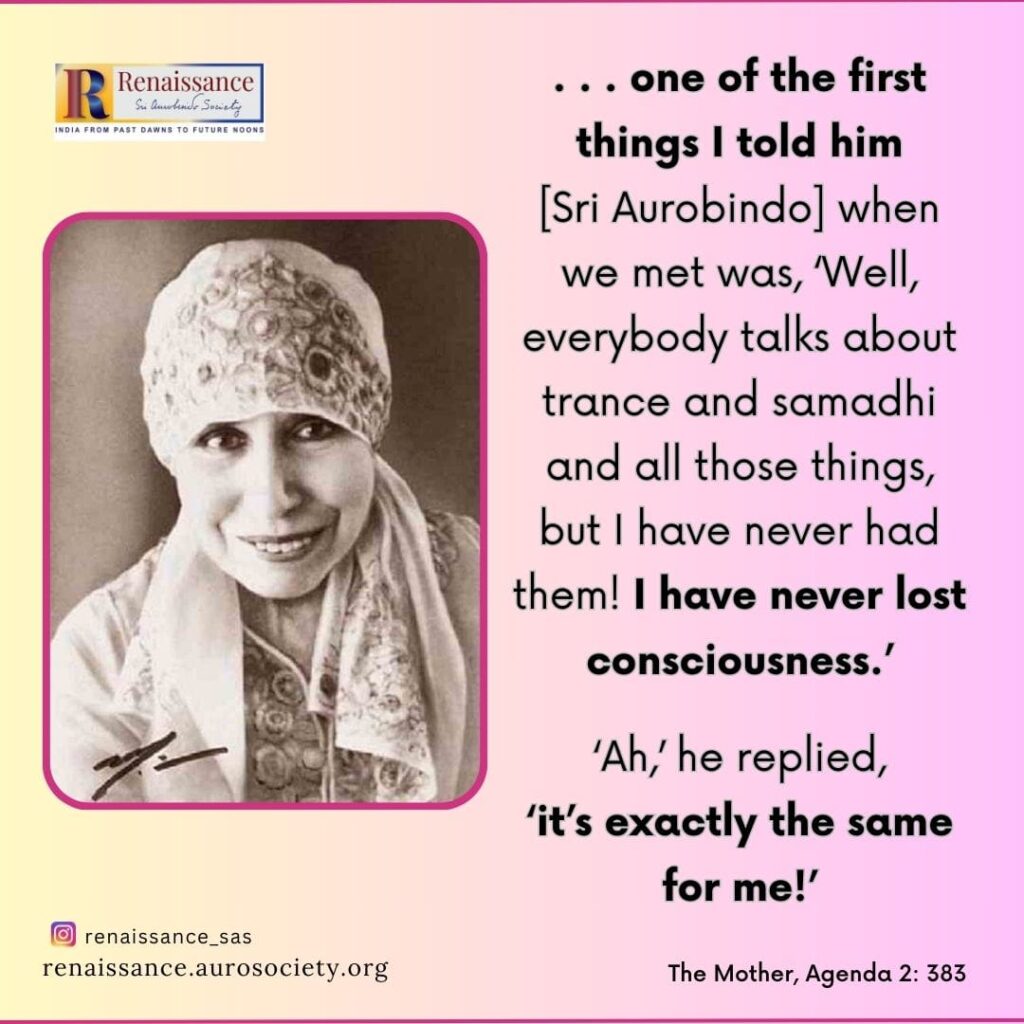
It depends upon the level of development, that’s what Theon used to say: ‘One goes into trance only when certain links are missing.’ He saw people as made up of innumerable small ‘bridges,’ with intermediary zones. ‘If you have an intermediary zone that is undeveloped,’ he said, ‘a zone where you are not conscious because it’s not individualized, then you will be in trance when you cross it.’ Trance is the sign of non-individualization—the consciousness is not awake and so your body goes into trance.
But if your consciousness is wide awake you can sit, keeping full contact with things, and have the total experience. I could go out of my body with no need of trance, except when Theon wanted me to do a particular work. . . .
Sri Aurobindo told me he had never really entered the unconsciousness of samadhi—for him, these domains were conscious; he would sit on his bed or in his armchair and have all the experiences.
Naturally, it’s preferable to be in a comfortable position (it’s a question of security). If you venture to do these kinds of things standing up, for instance, as I have seen them done, it’s dangerous. But if one is quietly stretched out, there is no need for trance.
Besides, according to what I’ve been told (not physically), I believe that the Rishis practiced going into trance. But I suppose they wanted to achieve what Sri Aurobindo speaks of: a PHYSICAL transformation of the physical body permitting one to LIVE this consciousness instead of the ordinary consciousness.
Did they ever do it?… I don’t know. The Veda simply recounts what the forefathers have done. But who are these forefathers?
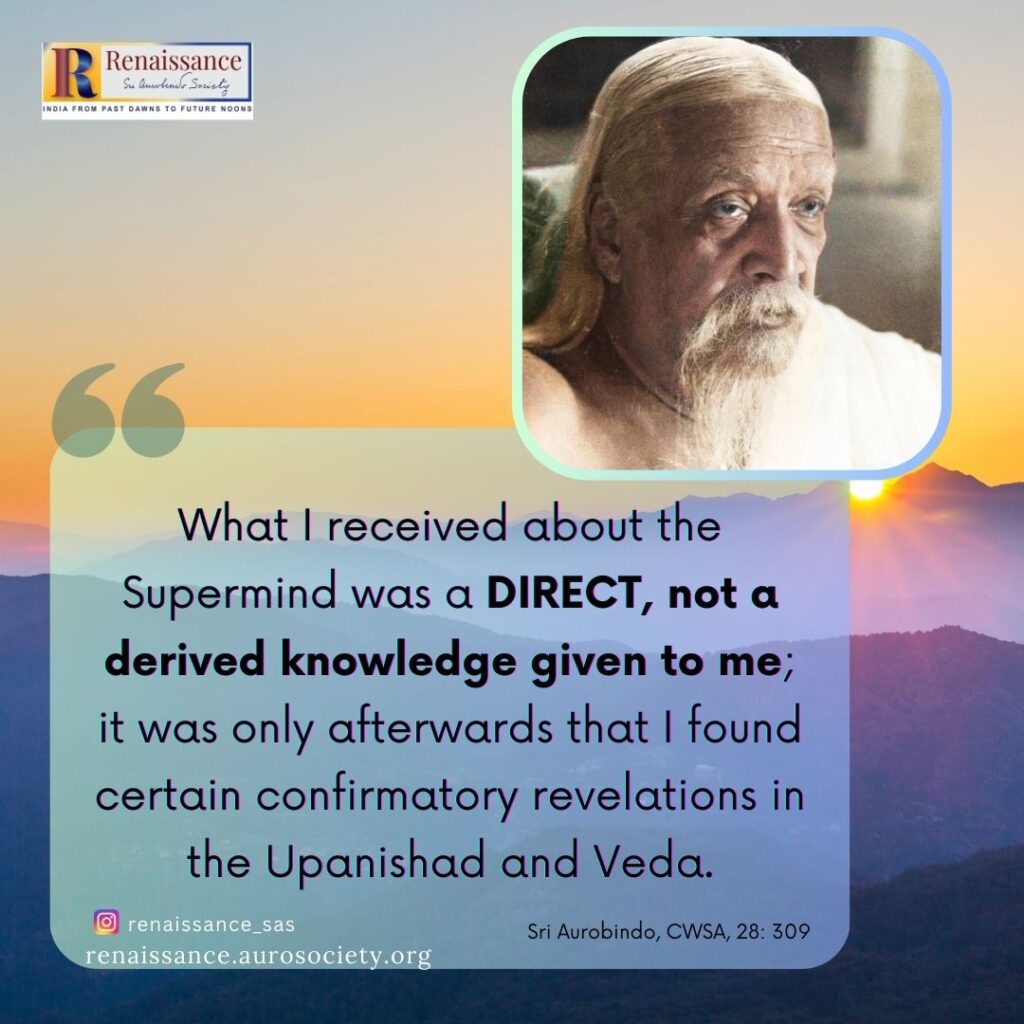
Read Words of Sri Aurobindo:
The Rishis as the Makers of Indian Civilization
~ Content Research and Design: Beloo Mehra

